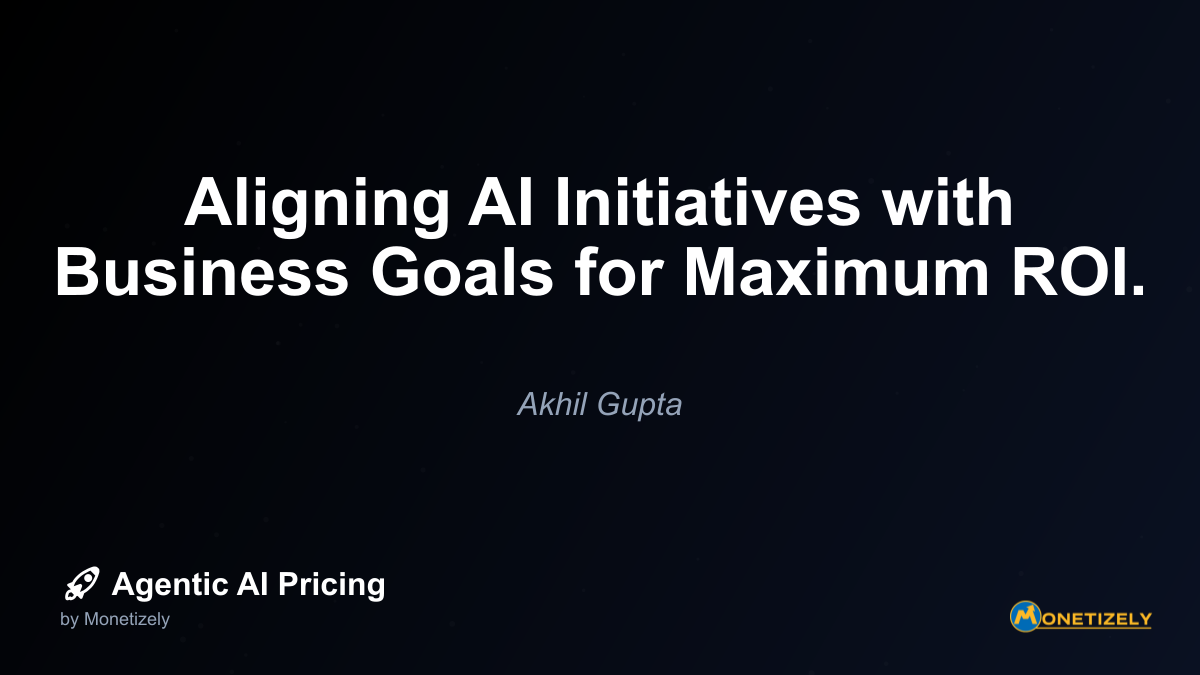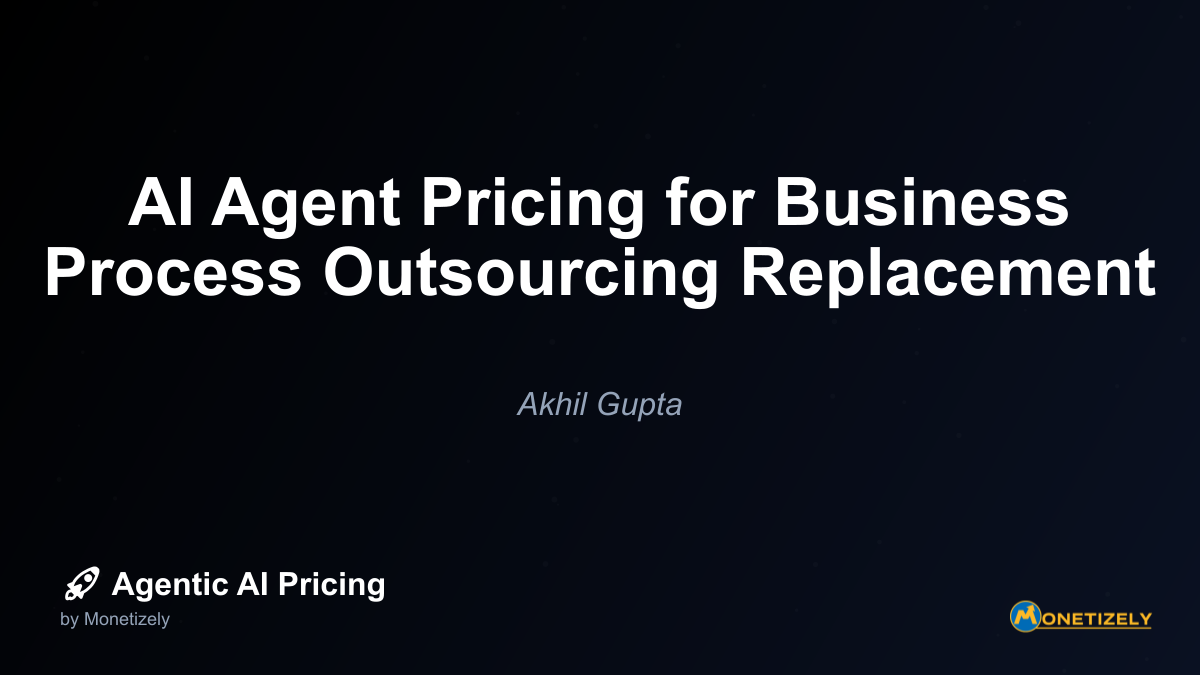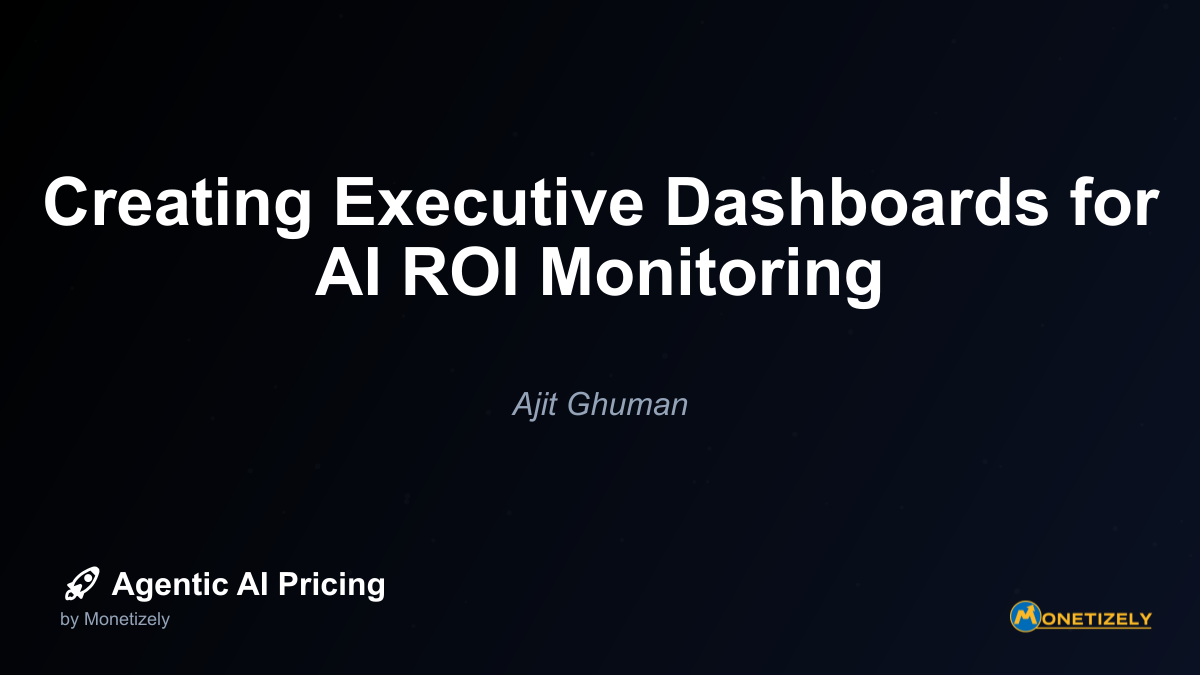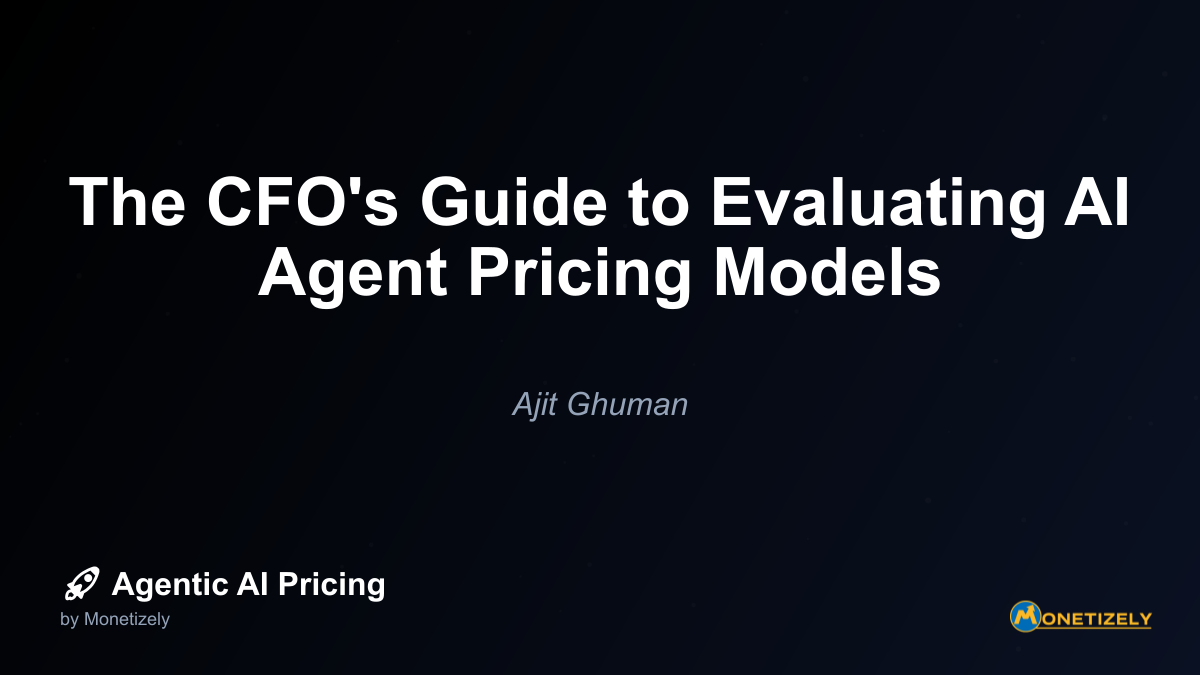· Akhil Gupta · ROI and Value · 11 min read
Aligning AI Initiatives with Business Goals for Maximum ROI.
AI and SaaS Pricing Masterclass
Learn the art of strategic pricing directly from industry experts. Our comprehensive course provides frameworks and methodologies for optimizing your pricing strategy in the evolving AI landscape. Earn a professional certification that can be imported directly to your LinkedIn profile.

AI initiatives have become a critical component of business strategy across industries. However, simply implementing AI solutions without strategic alignment often leads to disappointing returns. The key to maximizing ROI from agentic AI investments lies in deliberately connecting these technological initiatives with core business objectives. When AI projects directly serve strategic goals like enhancing customer retention, streamlining operations, or reducing costs, they transform from interesting technical experiments into powerful business drivers.
Why Business-AI Alignment Matters for ROI
The disconnect between AI initiatives and business objectives represents one of the primary reasons organizations fail to realize expected returns from their AI investments. According to recent studies, companies that explicitly align their AI projects with specific business outcomes are 3.5 times more likely to report substantial value creation from these initiatives. This stark difference highlights the critical importance of strategic alignment.
When AI projects operate in isolation from business strategy, several problems emerge:
- Resource misallocation: Teams invest time and capital in capabilities that don’t address priority business challenges
- Difficulty measuring success: Without clear business objectives, defining meaningful success metrics becomes challenging
- Stakeholder disengagement: Business leaders lose interest when they can’t see direct connections to outcomes they care about
- Implementation barriers: Solutions face resistance when they don’t visibly contribute to recognized business goals
Conversely, when AI initiatives directly target specific business objectives, they benefit from clearer direction, stronger executive support, and more straightforward value demonstration.
Identifying High-Impact Business Objectives for AI Alignment
Not all business objectives offer equal opportunity for AI enhancement. The first step in alignment is identifying which strategic goals present the strongest potential for AI-driven improvement. These typically fall into several categories:
Revenue Enhancement Objectives
- Customer acquisition optimization: Using AI to identify high-potential prospects and personalize outreach
- Conversion rate improvements: Implementing intelligent recommendations and dynamic pricing
- Upsell and cross-sell enhancement: Deploying predictive models to identify additional purchase opportunities
- Customer retention: Applying churn prediction models and proactive intervention systems
Operational Efficiency Goals
- Process automation: Streamlining workflows through intelligent process automation
- Resource optimization: Improving allocation of personnel, inventory, and other resources
- Quality control enhancement: Detecting potential issues before they impact customers
- Supply chain optimization: Predicting disruptions and automatically adjusting procurement
Customer Experience Objectives
- Personalization at scale: Tailoring interactions based on individual preferences and behaviors
- Response time improvement: Accelerating service delivery through automation and prioritization
- Self-service enhancement: Creating more intuitive and capable self-service options
- Sentiment monitoring: Tracking and responding to customer feedback across channels
Risk Mitigation Goals
- Fraud detection: Identifying suspicious patterns that indicate potential fraud
- Compliance assurance: Monitoring activities to ensure regulatory compliance
- Quality prediction: Anticipating potential quality issues before they occur
- Security enhancement: Detecting and responding to potential security threats
The most promising AI initiatives typically address objectives with three characteristics: they’re strategically important, data-rich, and involve decisions or processes that could benefit from automation or enhanced intelligence.
Creating a Value-Driven AI Strategy
Once you’ve identified relevant business objectives, developing a value-driven AI strategy requires several key steps:
1. Quantify the Current State
Before implementing any AI solution, establish baseline metrics for the business processes you aim to improve. This might include:
- Current customer acquisition costs
- Existing conversion rates across channels
- Present operational efficiency metrics
- Current error rates or quality issues
- Existing customer satisfaction scores
These baseline measurements provide the foundation for demonstrating ROI after implementation. Without them, proving value becomes significantly more challenging.
2. Define Specific, Measurable Outcomes
Translate broad business objectives into specific, quantifiable outcomes the AI initiative should deliver. For example:
- “Reduce customer churn by 15% within six months”
- “Decrease call center volume by 25% through enhanced self-service”
- “Improve inventory forecasting accuracy by 30%”
- “Reduce false positives in fraud detection by 40% while maintaining detection rates”
These specific targets create clarity for development teams and establish clear success criteria for the project.
3. Map AI Capabilities to Business Objectives
Identify which AI capabilities can directly contribute to each business objective. This mapping might include:
- Natural language processing for customer service automation and sentiment analysis
- Predictive analytics for churn prediction and inventory optimization
- Computer vision for quality control and security monitoring
- Recommendation systems for personalization and cross-selling
- Anomaly detection for fraud prevention and equipment maintenance
This mapping ensures the technical approach directly serves the intended business outcomes.
4. Prioritize Based on Value Potential
Not all AI initiatives deliver equal returns. Prioritize projects based on:
- Expected business impact: Which initiatives address the most valuable business objectives?
- Technical feasibility: Which solutions can be implemented with available data and technology?
- Implementation complexity: Which projects can deliver value most quickly with reasonable effort?
- Organizational readiness: Which areas have the necessary support and change management capabilities?
This prioritization ensures resources flow to the most promising opportunities first.
Implementation Strategies That Maintain Business Alignment
Creating alignment at the planning stage is essential, but maintaining that alignment throughout implementation is equally important. Several strategies help ensure AI initiatives stay connected to business objectives:
1. Establish Cross-Functional Teams
AI projects with the strongest business alignment typically involve cross-functional teams that include:
- Business stakeholders who understand the strategic objectives
- Subject matter experts who comprehend the processes being enhanced
- Data scientists and AI specialists who can develop appropriate solutions
- IT professionals who understand integration requirements
- End users who will ultimately work with the AI systems
This diversity ensures technical decisions remain grounded in business realities.
2. Implement Agile Development Approaches
Agile methodologies are particularly valuable for maintaining alignment because they:
- Focus on delivering incremental business value
- Allow for regular reassessment of priorities
- Enable adaptation as business needs evolve
- Provide frequent opportunities for stakeholder feedback
These characteristics help prevent the common problem of AI projects that deliver technically impressive solutions that miss the business mark.
3. Create Business-Centric Success Metrics
Measuring AI projects primarily through technical metrics (model accuracy, processing speed, etc.) often leads to misalignment. Instead, establish success metrics directly connected to business outcomes:
- Revenue increases attributable to AI-enhanced recommendations
- Cost reductions from automated processes
- Improvements in customer satisfaction scores
- Decreases in error rates or risk incidents
These business-centric metrics keep the focus on value creation rather than technical achievement.
4. Develop Clear Feedback Loops
Establish mechanisms for ongoing feedback between business stakeholders and technical teams:
- Regular review sessions focused on business impact
- Dashboards that display both technical and business metrics
- User feedback channels for those interacting with AI systems
- Periodic reassessment of alignment with evolving business priorities
These feedback loops help catch and correct misalignment before it significantly impacts results.
Overcoming Common Alignment Challenges
Even with the best intentions, several common challenges can disrupt the alignment between AI initiatives and business objectives:
Challenge 1: Shifting Business Priorities
Business priorities naturally evolve in response to market conditions, competitive pressures, and organizational changes. This evolution can leave AI initiatives misaligned with current objectives.
Solution: Implement quarterly alignment reviews that reassess how AI projects connect to current business priorities. Be prepared to pivot or adjust initiatives when strategic objectives change.
Challenge 2: Technical Limitations Discovery
Sometimes, teams discover during implementation that technical limitations prevent the AI solution from addressing the business objective as originally envisioned.
Solution: Maintain transparency about technical constraints, and work collaboratively with business stakeholders to either adjust expectations or explore alternative approaches that can deliver similar business value.
Challenge 3: Measurement Difficulties
Quantifying the business impact of AI initiatives can be challenging, particularly when multiple factors influence outcomes.
Solution: Develop sophisticated measurement approaches that isolate the impact of AI interventions, such as A/B testing, controlled rollouts, or statistical methods that control for external variables.
Challenge 4: Organizational Resistance
Even well-aligned AI initiatives may face resistance from employees concerned about job displacement or workflow disruption.
Solution: Focus on how AI augments human capabilities rather than replaces them. Involve affected employees in the design process, and invest in change management and training programs that help people adapt to AI-enhanced workflows.
Case Studies: Successful Business-AI Alignment
Examining organizations that have successfully aligned AI initiatives with business objectives provides valuable insights into effective approaches.
Case Study 1: Financial Services Firm Reduces Churn
A mid-sized financial services company identified customer retention as a critical business objective, with each percentage point of improved retention worth approximately $3.2 million annually.
They developed an AI-driven early warning system that identified customers showing signs of potential attrition based on transaction patterns, service interactions, and external data. The system triggered personalized intervention protocols tailored to each customer’s specific situation.
Results: Within eight months, customer churn decreased by 18%, delivering an estimated $57.6 million in preserved revenue. The clear connection to revenue retention maintained executive support throughout the implementation process.
Case Study 2: Manufacturing Company Optimizes Quality Control
A manufacturing organization identified product quality as a strategic priority after calculating that quality issues were costing approximately $15 million annually in returns, warranty claims, and brand damage.
They implemented a computer vision system that analyzed products during assembly, identifying potential defects with greater accuracy than human inspectors could achieve. The system integrated directly with production lines, automatically flagging items for review or rework.
Results: Quality-related costs decreased by 62% within the first year, saving approximately $9.3 million. The direct connection to quality metrics and cost reduction created strong alignment between the AI initiative and business objectives.
Case Study 3: Retailer Enhances Customer Experience
A retail chain identified personalized customer experience as a strategic differentiator in a highly competitive market. They calculated that increasing average transaction value by just 5% would generate an additional $28 million in annual revenue.
They implemented an AI-driven recommendation engine that analyzed past purchases, browsing behavior, and demographic information to suggest relevant products to customers both online and through in-store associate tablets.
Results: Average transaction value increased by 7.2%, exceeding targets and generating approximately $40.3 million in incremental revenue. The clear connection to revenue metrics maintained alignment throughout the project.
Measuring and Communicating AI ROI
Once AI initiatives are implemented, measuring and effectively communicating their ROI becomes essential for maintaining organizational support and securing resources for future projects.
Comprehensive ROI Calculation
Effective ROI calculation for AI initiatives should consider multiple factors:
- Direct revenue impacts: Increased sales, improved retention, higher conversion rates
- Cost reductions: Decreased operational expenses, reduced error rates, lower resource requirements
- Risk mitigation benefits: Reduced fraud losses, fewer compliance penalties, decreased security incidents
- Implementation costs: Technology investments, consulting fees, internal resource allocation
- Ongoing operational costs: Maintenance, monitoring, periodic retraining, and updates
This comprehensive approach provides a more accurate picture of the initiative’s true business impact.
Timeframe Considerations
AI initiatives often deliver value over different timeframes:
- Short-term gains: Immediate efficiency improvements or cost reductions
- Medium-term benefits: Enhanced decision-making capabilities and improved customer experiences
- Long-term advantages: Organizational learning, data asset development, and competitive positioning
ROI calculations should account for these varying timelines, particularly when communicating with executives who may have different time horizons for expected returns.
Effective Communication Strategies
When communicating AI ROI to stakeholders, several approaches prove particularly effective:
- Connect to established business metrics: Frame results in terms of recognized KPIs rather than technical achievements
- Use visual representations: Develop dashboards and visualizations that clearly illustrate business impact
- Provide comparative context: Show how AI-enhanced processes perform relative to previous approaches
- Include both quantitative and qualitative benefits: Supplement financial metrics with qualitative improvements in areas like customer satisfaction
- Acknowledge limitations and uncertainties: Maintain credibility by being transparent about limitations in your measurements
These communication strategies help ensure business leaders understand and appreciate the value being delivered.
Building a Culture of Business-AI Alignment
Ultimately, consistent alignment between AI initiatives and business objectives requires more than project-specific tactics—it demands a supportive organizational culture. Several approaches help build this culture:
1. Develop AI Literacy Among Business Leaders
Business executives who understand AI’s capabilities and limitations make better decisions about where and how to apply these technologies. Invest in educational programs that help business leaders develop AI literacy without requiring technical expertise.
2. Create Collaborative Decision Structures
Establish governance structures that bring together technical and business perspectives when making decisions about AI investments. These might include:
- AI steering committees with balanced representation
- Joint prioritization processes for AI initiatives
- Shared accountability for outcomes between technical and business leaders
These collaborative structures ensure alignment considerations influence decisions from the earliest stages.
3. Reward Cross-Functional Collaboration
Modify incentive structures to reward both technical and business professionals for successful collaboration. When data scientists are evaluated partly on business impact and business managers partly on effective technology utilization, alignment naturally improves.
4. Institutionalize Regular Alignment Reviews
Make alignment assessment a standard component of project governance. Regular reviews that explicitly examine how well AI initiatives continue to serve business objectives help prevent drift over time.
Conclusion: The Competitive Advantage of Alignment
In the rapidly evolving landscape of agentic AI, the organizations that gain the greatest competitive advantage won’t necessarily be those with the most advanced technical capabilities. Instead, the winners will be those that most effectively align their AI initiatives with strategic business objectives.
This alignment transforms AI from a technological curiosity into a powerful business driver. It ensures resources flow to the highest-value opportunities, accelerates adoption by connecting to recognized priorities, and maximizes return on AI investments.
By following the approaches outlined in this article—identifying high-impact objectives, creating value-driven strategies, implementing with alignment in mind, overcoming common challenges, and building supportive organizational cultures—companies can significantly increase their AI ROI.
The most successful organizations will view AI not as a separate technical domain but as an integrated business capability that directly contributes to strategic objectives. This perspective shift represents the difference between interesting AI experiments and transformative business initiatives that deliver substantial, measurable value.
Co-Founder & COO
Akhil is an Engineering leader with over 16+ years of experience in building, managing and scaling web-scale, high throughput enterprise applications and teams. He has worked with and led technology teams at FabAlley, BuildSupply and Healthians. He is a graduate from Delhi College of Engineering and UC Berkeley certified CTO.
Pricing Strategy Audit
Let our experts analyze your current pricing strategy and identify opportunities for improvement. Our data-driven assessment will help you unlock untapped revenue potential and optimize your AI pricing approach.




